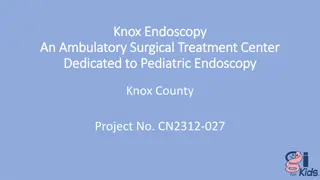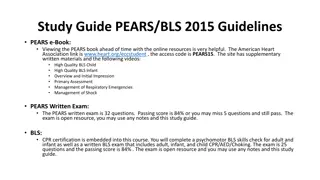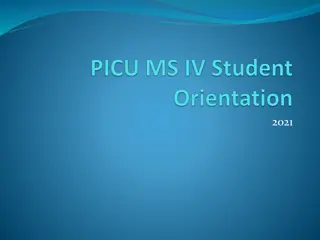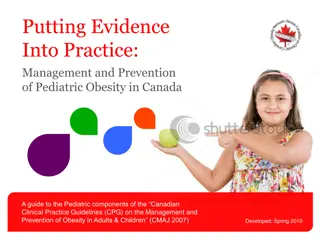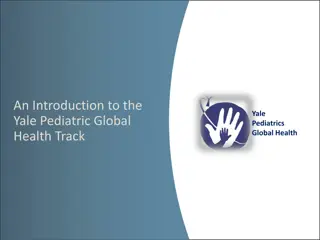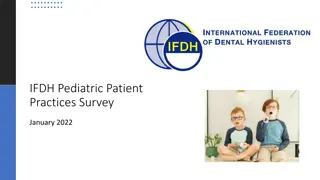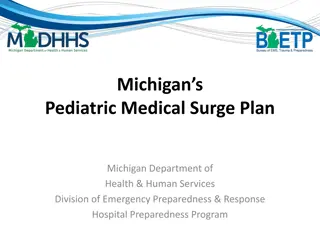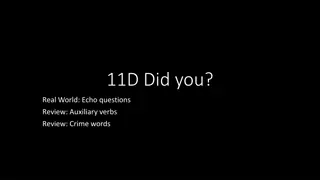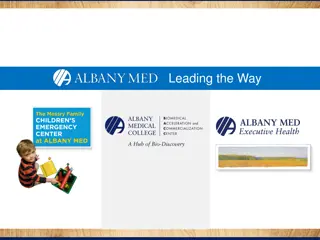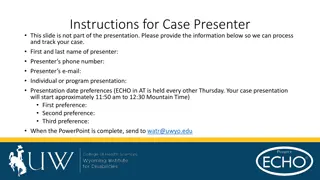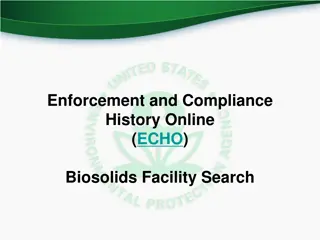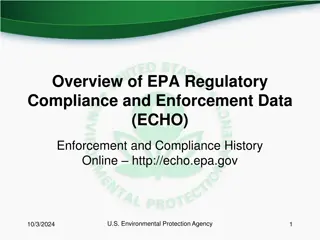Pediatric Care Educational Program: Project Echo 2018-2020
Enhance pediatric emergency care skills and guidelines through the Project Echo educational series led by Dr. Michael J. Rock, MD. This program focuses on improving diagnosis, treatment, and communication strategies for pediatric trauma cases. Accredited by various organizations, participants can earn CME credits by following simple instructions provided.
Download Presentation

Please find below an Image/Link to download the presentation.
The content on the website is provided AS IS for your information and personal use only. It may not be sold, licensed, or shared on other websites without obtaining consent from the author. Download presentation by click this link. If you encounter any issues during the download, it is possible that the publisher has removed the file from their server.
E N D
Presentation Transcript
Project Echo for Pediatric Care 2018-2020 It s Only A Virus December 20, 2018 Michael J. Rock, MD Provided by the University of Wisconsin Madison Interprofessional Continuing Education Partnership (ICEP) Intended Audience: Pediatric emergency care professionals Objectives: As a result of this educational regularly scheduled series, learners will be able to: 1. Utilize new skills and guidelines determined to be safe for children when accessing pediatric trauma. 2. Identify proper tools and standardized practices in order to improve the diagnosis and treatment of pediatric patients. 3. Define roles and responsibilities of team members who triage pediatric emergencies in order to identify communication strategies that result in effective patient care. Policy on Disclosure It is the policy of the University of Wisconsin-Madison ICEP that the faculty, authors, planners, and other persons who may influence content of this CE activity disclose all relevant financial relationships with commercial interests* in order to allow CE staff to identify and resolve any potential conflicts of interest. Faculty must also disclose any planned discussions of unlabeled/unapproved uses of drugs or devices during their presentation(s). For this educational activity, all conflicts of interest have been resolved and detailed disclosures are listed below. The University of Wisconsin-Madison ICEP defines a commercial interest as any entity producing, marketing, re-selling, or distributing health care goods or services consumed by, or used on, patients The University of Wisconsin-Madison ICEP does not consider providers of clinical service directly to patients to be commercial interests. Discussion of Unlabeled/Unapproved uses of drugs/devices in presentation? No Name/Role Financial Relationship Disclosures Jonathan Kohler, MD Presenter, Chair Veronica Watson Coordinator Randi Cartmill, Coordinator Benjamin Eithun, MSN, RN, Coordinator Kim Sprecker, OCPD Staff Michael J. Rock, MD, Presenter No relevant financial relationships to disclose No relevant financial relationships to disclose No relevant financial relationships to disclose No relevant financial relationships to disclose No No No No relevant financial relationships to disclose No relevant financial relationships to disclose No relevant financial relationships to disclose No No No Accreditation Statement In support of improving patient care, the University of Wisconsin Madison ICEP is jointly accredited by the Accreditation Council for Continuing Medical Education (ACCME), the Accreditation Council for Pharmacy Education (ACPE), and the American Nurses Credentialing Center (ANCC) to provide continuing education for the healthcare team. Credit Designation Statements American Medical Association (AMA) The University of Wisconsin-Madison ICEP designates this live activity for maximum of 1.0 AMA PRA Category 1 Credits activity. American Nurses Credentialing Center (ANCC) The University of Wisconsin-Madison ICEP designates this live activity for a maximum of 1.0 ANCC contact hours. The University of Wisconsin-Madison School of Nursing is Iowa Board of Nursing provider 350. Continuing Education Units (CEUs) The University of Wisconsin-Madison, as a member of the University Continuing Education Association (UCEA), authorizes this program for 0.1 CEUs or 1 hours. . Physicians should claim only the credit commensurate with the extent of their participation in the Disclaimer: All photos and/or videos included in the following presentation are permitted by subjects or are not subject to privacy laws due to lack of patient information or identifying factors
Claiming credit Follow the instructions below, and contact us at projectecho@surgery.wisc.edu with any questions. 1. Create account with the UW Interprofessional Continuing Education Partnership https://ce.icep.wisc.edu 2. During the live presentation, and in the follow-up email, you will be provided a code. Text that code to a number we provide you, using a cell phone associated with your account. Text JODDUM to 608-260-7097 (save this number as ECHO Credit, it will never change) 3. All done!! Log onto ICEP to view or print your credit letter.
Case presentation 11 month old with hypotonia, weak cough, developmental delay presented with cough and rapid breathing PMH pertinent for a previous episode of rhinovirus with superimposed pneumonia, requiring intubation Vitals: temp: 37.5; heart rate: 174 bpm; respiratory rate: 63 breaths/min Exam: pertinent for tachypnea, belly breathing and on auscultation of the lungs, crackles SpO2 on room air: 78% Nasal swab: Influenza A and B negative; RSV positive
Despite BiPAP, child continued to be tachypneic and tachycardic. Intubated
Respiratory viruses RSV Rhinovirus Human metapneumovirus Influenza Adenovirus Parainfluenza virus
RSV (Respiratory syncytial virus) 40-50% of hospitalizations for bronchiolitis 25% of pediatric hospitalizations for pneumonia 100,000 admissions annually costing $300 million
Paramyxovirus 3 genera paramyxovirus: parainfluenza virus 1-4; mumps pneumovirus: RSV morbillivirus: mumps and rubeola
syncytia formation in tissue culture cells fusion glycoprotein confers ability to fuse cell membranes with the formation of intracellular bridges and ultimately multinucleated cells (syncytia)
RSV epidemiology Season: November through April Age: All ages infants 6 weeks to 2 years are most susceptible Attack rates: 50-95% in previously uninfected infants re-infection throughout life
Primary RSV infection: spectrum of disease asymptomatic upper respiratory tract infection only lower respiratory tract illness hospitalization apnea mortality % of patients 1 69 0.5-2 0.1-0.4 0.005-0.02 30
Pathogenesis necrosis of respiratory epithelium regeneration of non-ciliated epithelial cells obstruction of airway by intraluminal secretions lymphocytic peribronchiolar infiltrate submucosal & interstitial edema
Clinical manifestations profuse rhinorrhea, followed by cough reduced feeding fever is low grade or absent tachypnea cyanosis retractions expiratory wheeze inspiratory crackles
Treatment Most cases managed without hospitalization hydration oxygen as necessary Bronchodilators- not effective Steroids- not effective Ribavirin- not effective Nebulized hypertonic saline- shown to not be useful in a recent multicenter randomized controlled trial (Morikawa Y, et al: Nebulized hypertonic saline in infants hospitalized with moderately severe bronchiolitis due to RSV infection: A multicenter randomized controlled trial. Pediatr Pulmonol 2018;53:358-365)





